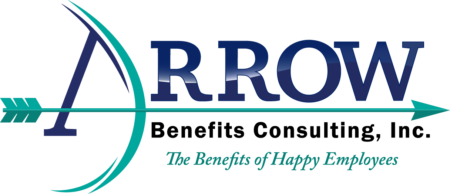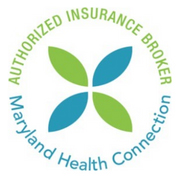Frequently Asked Questions
Frequently Asked Questions
A good broker provides accurate, competitive quotes to employers, designs benefit plans that meet the needs of the group, helps employees determine what coverage they need and makes sure everyone gets the most for their money. In this way Arrow acts as a “Benefit Counselor.”
Our service doesn’t stop with designing benefits plans. We also act as the “Project Manager” for enrollment events and handle any service issues that may arise. We bring in partners with technology platforms that make the enrollment process easier, reduce the need for paper enrollments, reduce any unnecessary contact and reduce errors in transmission typically associated with paper enrollment forms.
After the enrollment period Arrow is with our clients every step of the way from implementation and administration to compliance and advocacy. We understand the challenges faced by employers and individuals alike while navigating the increasingly complex benefits landscape.
- Make sure the plan includes access to the same doctors and other types of providers needed, including preferred pharmacies!
- Review all plan information, Summary of Benefits and Coverage (SBCs) for comparison to any other plans being considered and the plan details provided by the insurance carrier.
- Access any platform necessary to meet with the enrollment team and compare costs.
Life Insurance: missing an opportunity to enroll in Life Insurance coverage could potentially exclude an individual from buying it or limit the coverage they can purchase without what’s called “Evidence of Insurability.” This means having to prove one is an insurable risk which is determined through a medical review of an individual’s file and detailed health information.
- After reviewing the care and services received during the previous benefit year, look at how a different plan (or any updates to the existing plan) might pay differently for those same services going forward.
- Consider how any changing needs, such as those related to a new diagnosis or growing family, may change the financial outlook. Looking backward and forward to anticipate risks and considering factors like budget will help one make the best, most informed decisions.
- Meet with the Benefit Counselors at Arrow who will help with this process and, if needed, suggest other plans that are more effective in meeting their needs and managing their risks.
Insurance is designed to mitigate the cost of healthcare; it doesn’t pay for all a person’s care. There are three main ways insurance carriers require people to participate in their healthcare costs and it’s important to know when and how they are expected to participate:
Deductibles: very similar to the deductible people experience with car insurance, it’s the amount of medical expenses one is expected to meet before insurance “kicks in” and begins paying. The difference with health insurance is that depending on the plan, many services may or may not be subject to a deductible. There are some plans that will pay right away for common types of care and only require a deductible to be paid when someone is hospitalized. Other plans require the deductible to be met before the plan starts to pay for any care. This can drastically change the way a plan feels when someone goes to use it!
Coinsurance: can be in conjunction with deductibles and would require the individual to pay a percentage of the medical bill. A common example many are familiar with is an 80/20 plan where the insurance carrier pays 80% of the bill and the patient pays the remaining 20%.
Copayments: usually a set amount expected to be paid at the time of service, for example the $20 required up front at a routine doctor’s visit.
When considering the Out-of-Pocket Maximum numbers of various plans, it’s important to realize they can be deceiving. The way the plan pays for services and the way the money accumulates when more than one person is enrolled on that plan can create additional liability in a worst-case scenario. This is something Arrow helps our customers understand and take into account when selecting their benefit options.
At Arrow we understand that the thought of ANY out-of-pocket expense can feel uncertain and overwhelming. This is where our consultative approach and expertise comes in; by really getting to know our customers, we can use specific strategies and tools in our plan design that cover or drastically offset out-of-pocket expenses, especially for those unforeseeable events that can still leave a person with “really good insurance” with what feels like HUGE medical bills!
Plan details are important because they can have a tremendous impact financially and emotionally when someone needs care and goes to actually use their insurance. Insurance details factor heavily into how a person feels about the value of their benefits.
For example, some plans pay for the majority of a person’s everyday care WITHOUT requiring their deductible be met first. This can be an attractive feature of those high deductible plans, having things like doctor visits, imaging or labs paid for right away without having to meet a deductible. However, if something arises that requires a hospital stay the deductible will suddenly have to be met, creating a financial responsibility at a time it might be inconvenient or even a hardship.
Other plans, such as those that participate with or have H.S.A. stated in their title, require the deductible be met on day one. It means the person will pay for all doctor visits and any other services out-of-pocket until their deductible has been met and all these expenses “count” toward their deductible. The upshot is these plans cost less monthly and, much like a “price club membership”, any care or services will be billed by the provider at a discounted rate negotiated by the insurance carrier.
These are the kinds of details often overlooked or not fully understood as to how they function within the overall plan design. They can also leave people feeling like they have to make uncomfortable trade-offs or sacrifices somewhere in order to have plans they can afford.
No matter how attractive features like “low deductibles” or “no copays” seem on paper, it’s how they come into play and impact someone at the time care is needed that can determine how they feel about their benefits. Arrow is savvy to how all these details work and figure into the big picture. Using a consultative approach, we design plans that are affordable, meet people’s everyday needs and still cover the gaps to manage the level of risk associated with most insurance plans.
No! It’s a common belief that when choosing benefits people need to make uncomfortable trade-offs or sacrifice something, to choose between plans that are affordable up front but don’t provide the protection they really want and plans with expensive monthly premiums that cover a lot (and provide peace of mind for “what-ifs”) but leave them feeling their money might be being “wasted” each month on insurance features they may never need to use.
Arrow delivers the best of both worlds. Our goal is to make sure everyone feels real value in their benefits and is getting the most for their money. We design affordable plans that meet people’s everyday healthcare needs AND protects them from large exposure to financial risk in the case of those “what-if” situations. We do this for employers and individuals alike with our knowledge of how plan details work and by strategically using other types of specific insurance products that will cover any gaps, manage risks and accomplish our clients’ most important goals. Best yet, our expertise allows us to use these strategies working with any budget!
Even the most skilled insurance professionals review plan designs and ask questions. It’s wise for the person covered to do the same! Insurance plans have many seemingly small details that greatly affect the overall cost of a person’s healthcare, the way the plan pays when the person goes to use it and ultimately how they feel about their benefits. Meeting with Arrow is the best way to make sure someone gets what they need and want from their benefits.
Life insurance is the most important benefit when it comes to protecting your family. Life insurance pays out when there is a loss, and in some cases can have living benefits. When it comes to life insurance people should pay close attention to the details of these benefits and specifically, who benefits from them. It’s important that all dependent and beneficiary information is up to date and that all elections reflect what they want to be enrolled in.
H.S.A. or Health Savings Accounts are owned by employees and let them build a savings account with pre-taxed money to create a cushion for future health expenses. It requires a health plan with a minimum deductible to meet IRS eligibility.
F.S.A. or Flex Spending Accounts are owned by the employer and allow for a specific amount to be set aside for medical and other costs for their employees.
H.R.A. or Health Reimbursement Accounts are owned by the employer. This account allows the employer to reimburse employees’ medical bills on an as-needed basis.
Arrow helps our clients fully understand the complexities of these plans, how they work at the time of service and which will get our clients the most bang for their buck in meeting their specific needs.
- Review all provided information, videos, presentations and plan information provided by the insurance carriers!
- Review their healthcare needs and spending over the last 12 months!
- Schedule an appointment with their Benefits Counselor to review their coverage options and be sure the plan will meet their needs.
- Access their enrollment platform and work with their Benefit Counselor to make any desired changes OR accept the benefits currently enrolled in for the new benefit year.
- How to schedule an appointment with their Benefit Counselor
- How to look up a doctor or any other provider and determine what providers are in their network
- How to access a benefit like Life, Disability and/or other coverages offered, if those coverages are offered
- How to determine where their prescription may fall in the tiered payment schedule
- How to get the most benefit from their health plan and what plan will best suit their needs
- Where to go for ongoing help with any of the benefits available to them
- Review all provided information, videos, presentations and plan information provided by the insurance carriers!
- If they would like other options, they should gather any comparison information on those options to consider when making their decisions.
- Review their healthcare needs and spending over the last 12 months!
- Schedule an appointment with their Benefits Counselor at Arrow to review their coverage options and be sure the plan will meet their needs.
- Access their enrollment platform and work with their Benefit Counselor at Arrow to make any desired changes OR accept the benefits they are currently enrolled in as their coverage for the new benefit year.
Rest assured we offer the same thorough needs analysis, hands-on approach, diligence in plan design and ongoing service regardless of budget or the size of the group. We love helping employees better understand and make the most of their benefits, and for those between jobs or without employer-sponsored coverage we have benefit solutions for them too!




